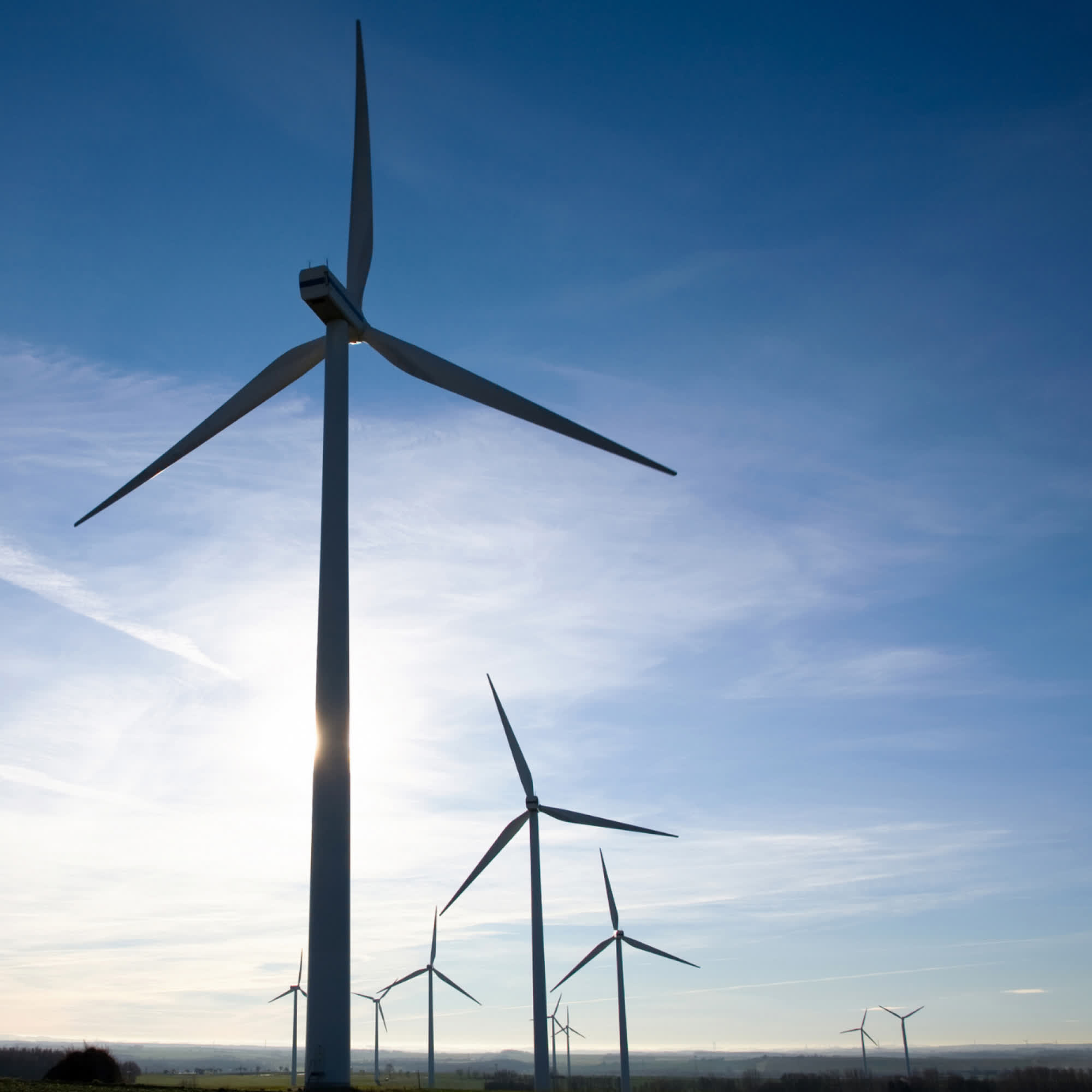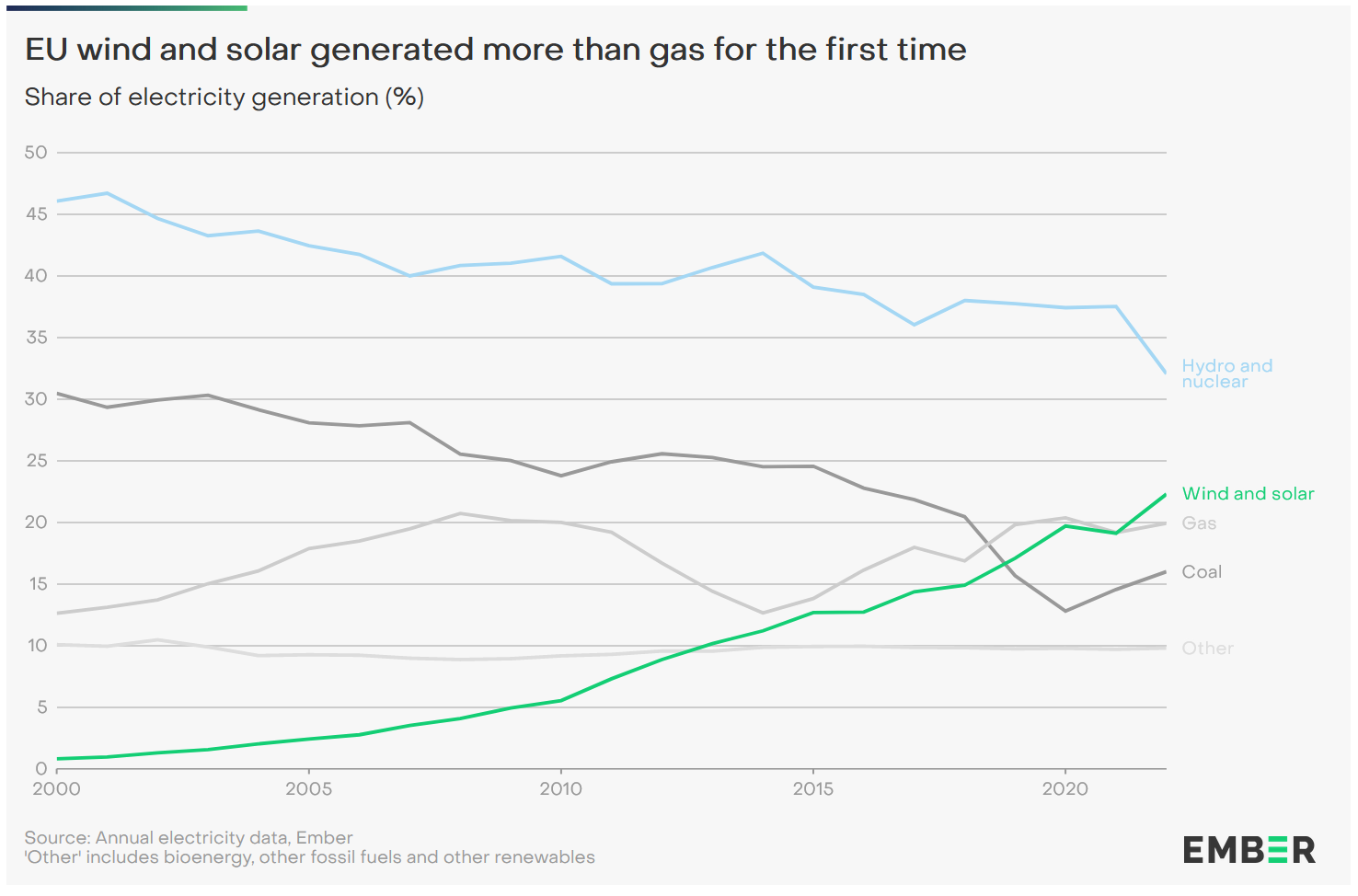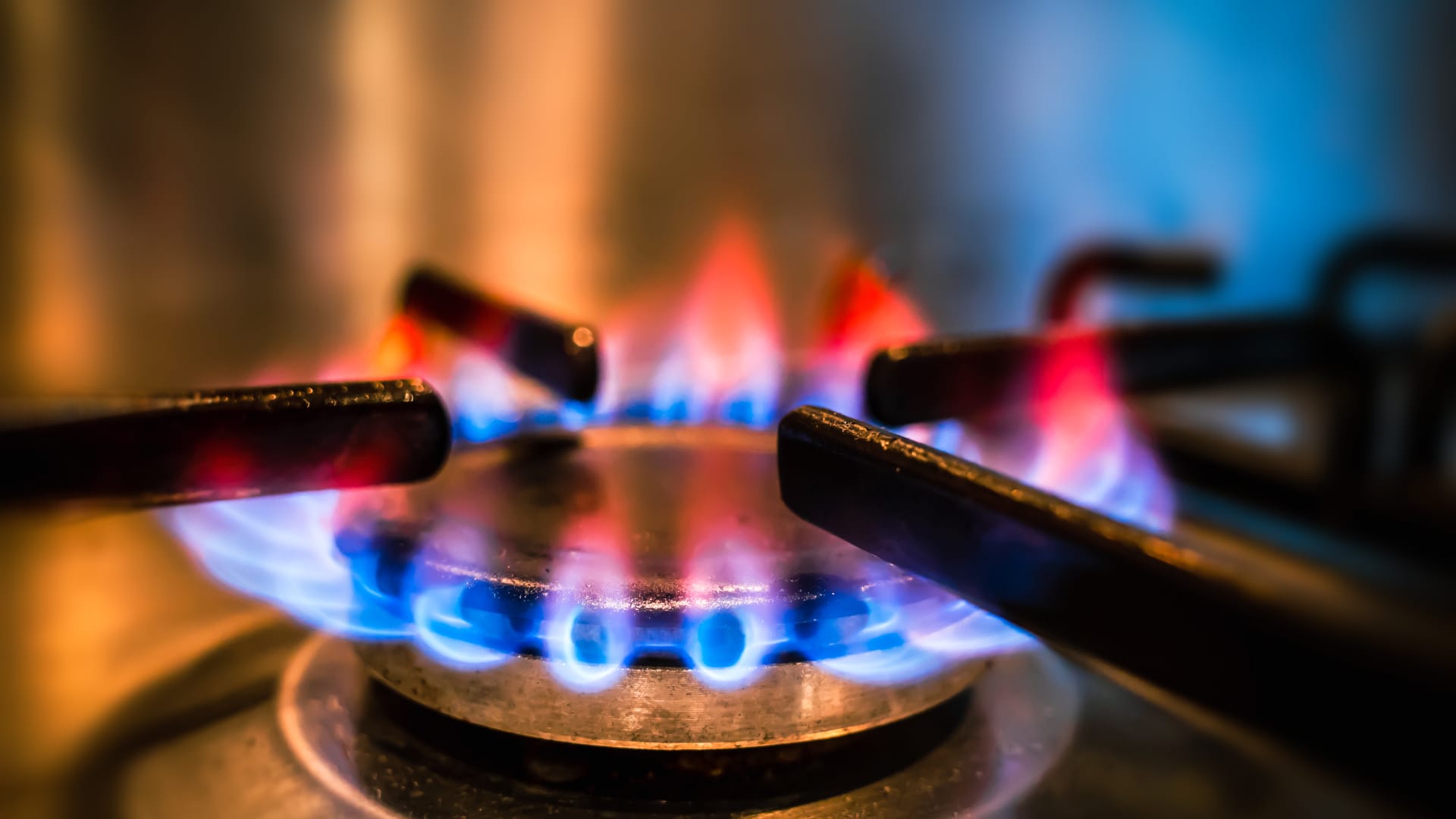Something to look forward to: In 2022, the European continent suffered one of its most difficult energy crises ever. A real turning point which, in spite of everything, provided a real boon for the adoption of renewable energy solutions.

The past year saw a remarkable increase in wind and solar power adoption in the European Union. A new report from Ember, a UK-based energy think tank that uses "data-driven insights" to promote a shift from coal to clean electricity, says that the EU successfully overcame the energy crisis triggered by Vladimir Putin's invasion war against Ukraine.
In 2022, Ember's report states, energy generation from wind and solar plants amounted to 22% of Europe's overall electricity bill. For the first time in the Old Continent's history, renewable sources were able to surpass natural gas, which was one of the main reasons for the unprecedented quarrel between Europe and Russia.
After the Ukraine invasion, the EU and other Western countries tried to put significant economic pressure on the Kremlin by implementing incrementally harsher sanctions against Russia. Moscow's authorities reacted by cutting supplies of natural gas to their major customer – I.e., Europe – which in turn set off a significant acceleration in energy transition to renewable sources.

According to Ember's report, solar generation rose by a record 39 TWh (or +24%) in 2022, with a 47% increase in solar panel installations equal to 41 GW. Twenty EU countries achieved their "highest ever share of solar electricity," Ember says, with the Netherlands as the leader in solar transition.
Fears about a wider reactivation of coal consumption to make up for Russian gas turned out to be unfounded, as coal plants just saw a +18% average utilization in the last quarter of the year. Of the 26 plants that were brought back online, 9 saw zero utilization. All in all, coal power generation grew by 7% in 2022.
According to Dave Jones, Ember's Head of Data Insights, Europe "has avoided the worst of the energy crisis." The shocks experienced in 2022 caused just "a minor ripple" in coal power reactivation and a huge wave of support for renewable sources. Fears of a coal rebound are now "dead," Jones said, and Europe's plan for transition to clear power generation is in full swing.
As for nuclear plants, in 2022 they provided the same amount of power as wind and solar sources – 22%. Nuclear power in Europe is mostly coming from France these days, but Ember isn't predicting a significant utilization increase for this year.
https://www.techspot.com/news/97483-wind-solar-power-rise-europe.html

/cloudfront-us-east-2.images.arcpublishing.com/reuters/Z7FNQIGGMRKSZPAFSSWDGEMWQI.jpg)


/cloudfront-us-east-2.images.arcpublishing.com/reuters/6TOMKFL2OVKADNO6D73NMYOBWU.jpg)